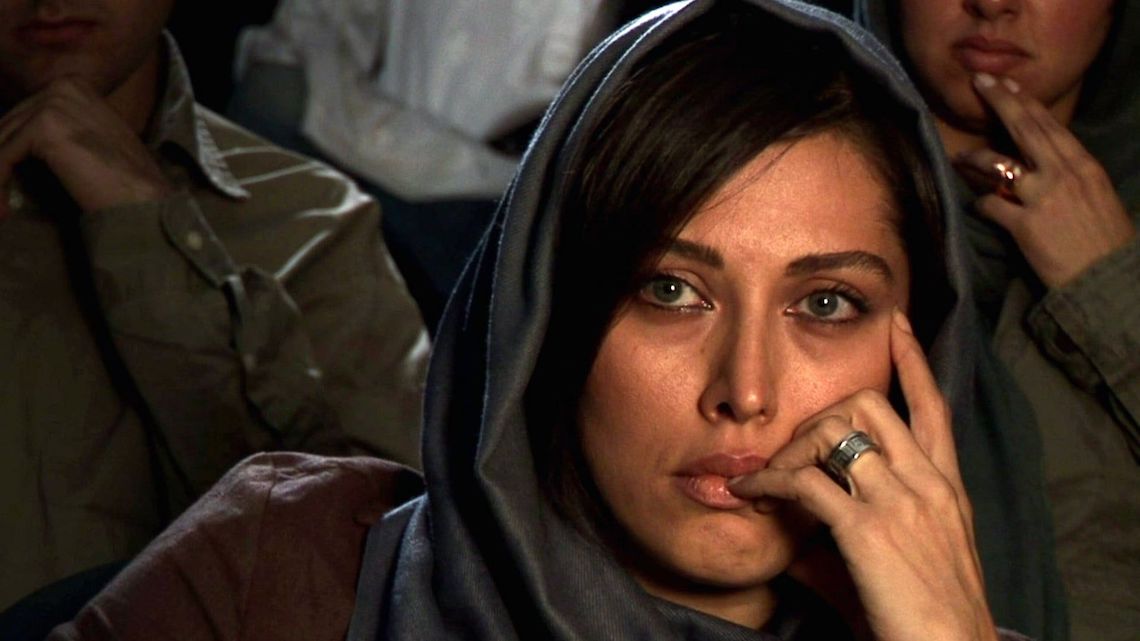Iranian cinema’s growing international popularity has coincided with implementation of government prohibitions on filmed violence, on any physical contact between (non-related) female and male actors, and restrictions on the import of mainstream commercial foreingn films (just to name a few) since the islamic revolution 1979, paradoxically created an extremely innovative national film industry known for its use of poetic realism and symbolic imagery that allows filmmakers to evade censorship particularly around restrictions on Iranian women. These restrictions were implemented after the Islamic revolution that took place from 1978-1979. Since then the Iranian government has been particularly strict in regards to the freedoms of women on and off screen.
Restrictions have long been the cause of creativity in the arts, scholar of feminism and Iranian cinema Norma Claire Moruzzi observes “Because women’s personal experiences have so often been shaped by national events and because open discussion of many of those events is still not possible, the public discussion of women’s lives is peculiarly coded. Because these codes have been constructed within the domain of the internal national experience, they are clearly readable to insiders, those who have shared the experiential references”
To the international viewers these cryptic allegorical devices used in film scenes may go undetected because, particularly in the west, these freedoms are taken for granted. But it is nuanced scenes that give Iranian cinema its national and stylistic particularity.
Poetic realism is a tendency in cinema that began in france but spread to other parts of the world, including Iran. they usually have a fatalistic view of life with their characters living on the margins of society. These films are ‘poetic’ because of a heightened aestheticism that sometimes draws attention to the representational aspects of the films.
The governing body in control of film censorship the Ministry of Culture and Islamic Guidance (MCIG) often had ambiguous rules on the restrictions of women and were open to interpretation. Filmmakers such as Rakhshan Bani-etemad took advantage of these discrepancies in the guidelines using poetic and allegorical devices to convey a message without being explicit in what exactly is being communicated.
In Bani-etemad’s film The May Lady, she centers the story around a woman who is a documentary film director, a divorced single mother attempting to balance pursuing her profession, her liaison with a man to whom she is not married, and raising a rebellious teenage boy. The film goes beyond breaking the thematic taboos of divorce, single motherhood, and unmarried relations with men. The imposition of the veil has led to the development of fascinating textual and narrative innovations which expand the vocabulary and extend the grammar of veiling and modesty in Iranian cinema. One of these textual innovations is the way mise-en-scene and filming suggests unveiling without showing it. In one shot, the female protagonist Foruq Kian arrives home work filming a documentary. A medium shot shows her walking through a hallway toward her bedroom. The camera pans with her as she walks in that direction, as she is about to go through the door she goes to take off her headscarf but disappears through the door just before the scarf is off. Of course this lets the audience know that Foruq has removed her headscarf but the director has orchestrated the scene in such a way that we have the removal of the headscarf in our minds without actually seeing it.
Male filmmakers such as Jafar Panahi have attempted to keep a realistic representation of women by avoiding filming them indoors. In real life, women in Iran remove their headscarves in the home, so by setting his films outside the home and location shooting, a conscious decision is made to avoid the unrealism of women veiling themselves at home which the MCIG states is forbidden to ignore.
Despite these attempts at evading censorship Iranian directors have countlessly had their films censored or banned; even stricter draconian codes introduced by Zarghami, who was appointed as Cinema Deputy, which were particularly targeted at women’s freedoms: wearing tight clothes, showing more than the face or hands above the wrist, close-up of women’s faces, and the body contact between men and women. Many filmmakers grew frustrated with working under such conditions causing some to leave the country; Bahram Beyzai left for france. Others such as Ebrahim Hatamikia considered giving up all together.
However, through to the current century we saw great filmmakers who had previously shied away from using strong leads who are women now casting strong female leads. Abbas Kiarostami’s highly experimental film Shirin (2008), shows close-up images of the faces of 140 Iranian actresses shown for 92 minutes as the actresses look directly at the camera as they watch an opera about the famous Persian love story ‘Khosrow and Shirin’. Unable to see the actual opera in front of them we only see the highly emotional and vulnerable states of the actresses as the soundtrack of the opera they are watching is heard. Not only does the film violate modesty rules with its long close-ups but also shows these women going through a range of emotional states completely opposing past expectations for women on screen to be passive, housebound, and largely unseen.
Kiarostami’s passing in 2016 left a void in Iranian cinema but his work has hopefully inspired future Iranian filmmakers to push the envelope and defy censorship on the freedoms of women despite the risks they may face.
In 1995 famed German filmmaker Werner Herzog said “What I say tonight will be a banality in the future. The greatest films of the world today are being made in Iran”.
‘Iranian Cinema and Feminism Under Theocratic Rule’ is an article written by Liam Witchalls. You can follow Liam on Vimeo.

